CHANCAY, Peru — Life in this centuries-old fishing town on Peru’s Pacific coast is about to be transformed.
A massive deep-water port for container ships is being built in Chancay, about 45 miles north of Lima, and it is being financed largely by China, Peru’s largest trading partner. The port will host some of the biggest cargo ships in the world and serve as an economic beachhead for China in Latin America, a region historically dominated by the United States where Beijing’s investment and influence is growing.
The megaport’s builder and Chinese and Peruvian government officials say it will supercharge the local and regional economy and reshape global shipping routes. But residents of Chancay, which has a population of about 60,000, say they are worried about the economic and environmental impact and annoyed that they have had little say in the $3.6 billion project.
The port is 4,500 miles from San Francisco, where President Joe Biden and Chinese President Xi Jinping are set to meet Wednesday on the sidelines of the Asia Pacific Economic Cooperation (APEC) conference, but geopolitically Chancay is on America’s “20-yard line,” as Gen. Laura Richardson, head of the U.S. Southern Command, described it.
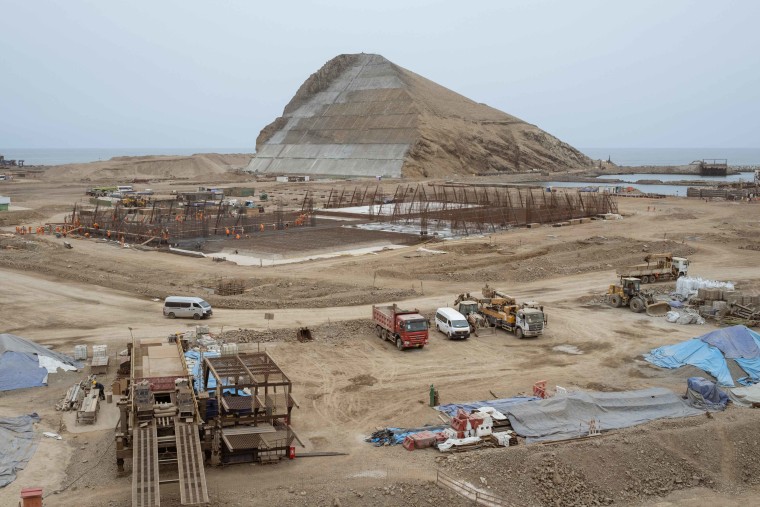
U.S. officials have reportedly raised concerns with Peru that Chinese investment in the port could have national security implications, given Xi’s oft-mentioned ambition of turning China into a “maritime superpower.” The port’s builder says it is for commercial use only.
Miriam Arce, a community leader whose father was a fisherman, has a different concern: that the fishing boats from her childhood will disappear, replaced by freighters amid the intensifying competition between the U.S. and China, the world’s two biggest economies.
“Both countries are in conflict,” said Arce, a 52-year-old artist. “We are in the middle of this conflict. And Chancay is very small.”
A faster route to Asia
NBC News was granted extensive access to the sprawling Chancay Port complex, which is 60% owned by the Chinese state-owned company Cosco, one of the world’s biggest shipping companies, and 40% owned by the Peruvian mining company Volcan.
During a recent tour, diggers and trucks were removing sandy brown earth while others were building berths for cargo ships. Several hundred workers brought in from China — mainly specialists, engineers and machinery operators — worked side by side with Peruvians, their combined numbers totaling about 2,200, according to Cosco.
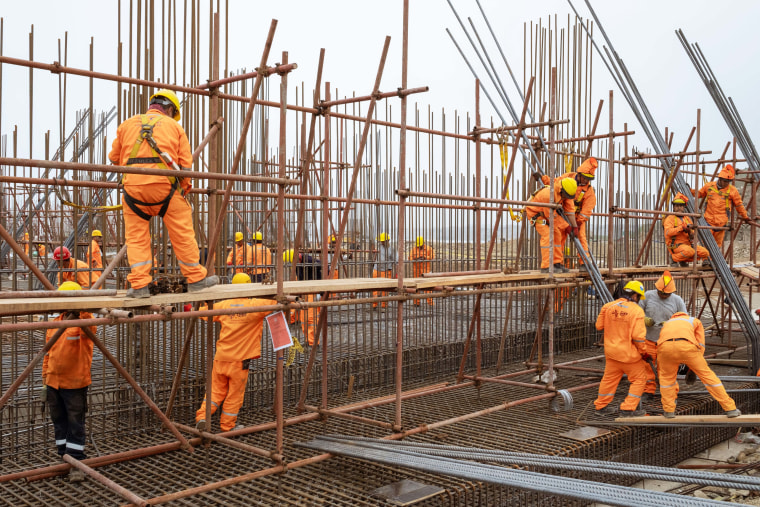
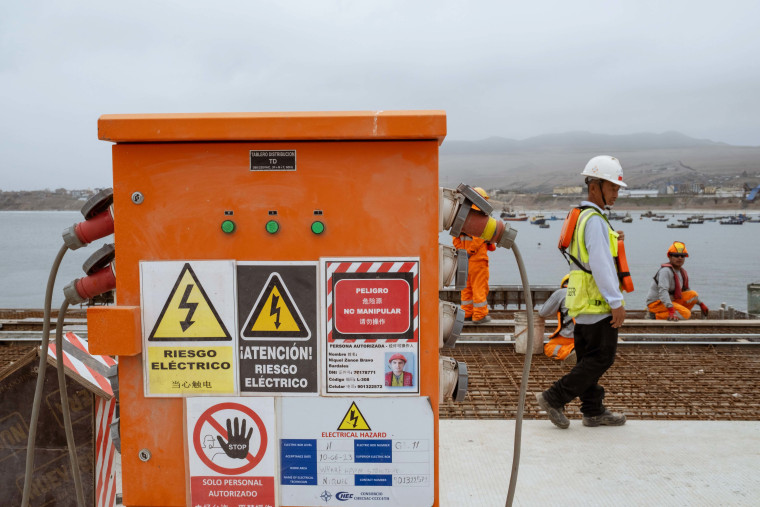
The company hopes the first phase of the megaport — part of Xi’s signature Belt and Road infrastructure initiative — will be complete by the time the Chinese leader visits Peru for the next APEC conference in late 2024.
“I think the port will change the life of a lot of people in Peru and will promote development and will increase trade,” said retired Adm. Gonzálo Ríos Polastri, deputy general manager of Cosco Shipping Ports in Chancay.
Peru’s trade minister, Juan Carlos Mathews, says the port will greatly reduce shipping time from South America to Asia, making Peru more competitive in foreign trade and cutting costs for exporters around the region.
“This new infrastructure is not just a spectacular asset for Peruvian companies but also for those in Chile, Colombia, Brazil and other regional countries conducting business in Asia,” he said in London last week.
The Chinese ambassador to Peru, Song Yang, says Chancay could become Peru’s version of Shanghai, the world’s biggest port city.
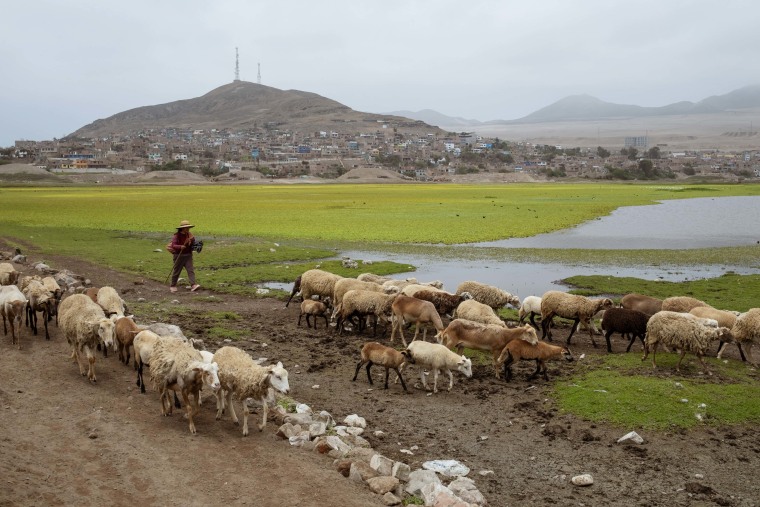
Ríos downplayed China’s role in financing the project.
“It’s not countries, it’s companies,” he said. “This is the investor that arrived to the project after a search with an investment bank, and they make the project successful and they make it real.”
But the port in Chancay is set to create an economic umbilical cord connecting South America with China, its biggest trading partner, and Asia more broadly. Though Cosco operates 38 ports around the world, the one in Chancay is its first in South America.
The company is promising a “smart port” that runs on automation and the latest digital technology, helping to reduce shipping times from South America to Asia by 10 days or more and removing stopovers in the U.S. and Mexico from the equation.
The trans-Pacific journey currently takes at least 35 days and includes stops at ports such as Long Beach, California. Once the port opens, Ríos said, goods could travel from Chancay to Shanghai in as little as 20 days.
The port is only one of multiple infrastructure projects involving Chinese companies in mineral-rich Peru. Chinese companies own or have a stake in at least five mines, and there are concerns that two Chinese companies could soon control 100% of the electricity supply in Lima if a sale by Italian energy firm Enel goes through.
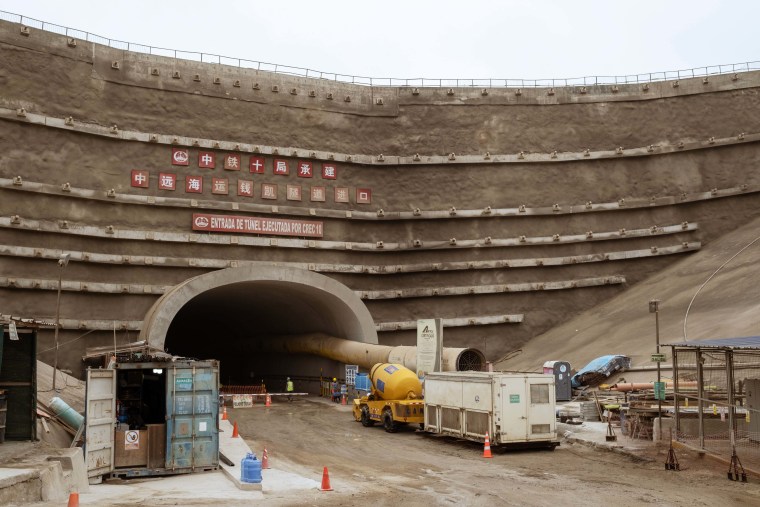
Responding to U.S. security concerns, Mathews, the trade minister, said Peru is open to investment from different parts of the world.
“We are not married to China, but we are developing a relationship with them,” he said.
Rios, who was a commander in the Peruvian Navy before his current role, dismissed the national security concerns, including that the Chancay port could one day be used by Chinese naval ships.
“In Peru there are very strict laws about coming with armed forces to ports or to any part of Peru, even for a single soldier with a rifle,” he said.
He said there are no provisions in the Cosco contract ruling out military use because that is not what the port is for.
“If you’re renting a car, you’re not told, ‘Please don’t use it to attack a building,’” he said.
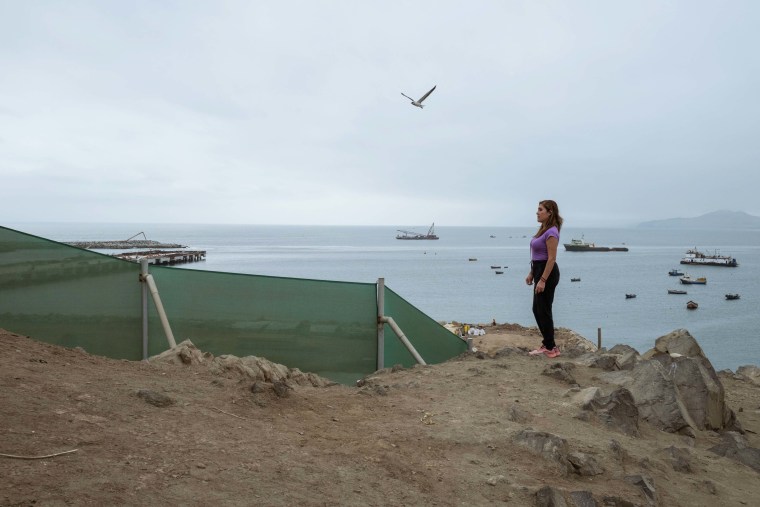
‘We are poorer every day’
Arce’s home on La Puntilla Street, which her grandfather bought in 1967, is now bordered by a huge green tarpaulin. On the other side is the Chancay Port construction site.
From her artist’s studio at the top of the house, she can hear the detonations and the diggers. Dust blankets everything. A painting of the fishing bay below has to be covered to protect it.
“I don’t agree with the new port from China because it’s very, very near our houses,” said Arce, who added that the consultation did not “include the people who live here.”
Residents say they are concerned about the impact on local wetlands and artisanal fishing. They also point to a 1.1-mile underground tunnel that aims to streamline the entry of trucks into the port.
Ríos said the tunnel was designed to minimize the port’s impact on the city, but residents say that is far from the case.
In May, a partial landslide at one of the tunnel construction sites damaged several houses and streets in the nearby community of Peralvillo and forced Cosco to suspend work. The Peruvian prosecutor’s office is investigating.
Peralvillo residents like Margarita Muñoz, 67, are worried about the cracks that have formed in their homes since tunnel construction began.
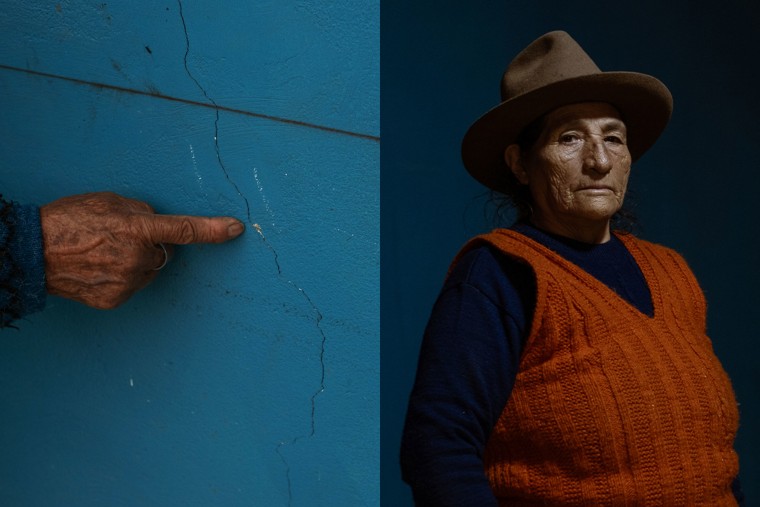
“They have only evacuated the family in the house that collapsed,” said her neighbor Angeli Yufra, an environmental activist. “But 200 others live in the immediate village and 2,000 more are at risk.”
In a response to questions after this article was published, Cosco said it was offering compensation to the families whose homes had been affected.
Yufra, 48, has lived in Chancay all her life and is raising three children here. She says at times residents no longer have running water in their homes, and that they get no answers from Cosco.
“We are poorer every day,” Yufra said. “There is no work. The businesses and markets are leaving, too.”

Ríos defended the port project, saying local property values had soared up to threefold and that it was being constructed with environmentally friendly methods.
He said he was proud it was being built.
“Peru needs investment,” Ríos said, adding that the U.S. “is welcome to invest in Peru.”
